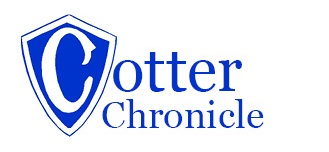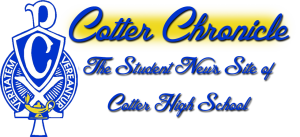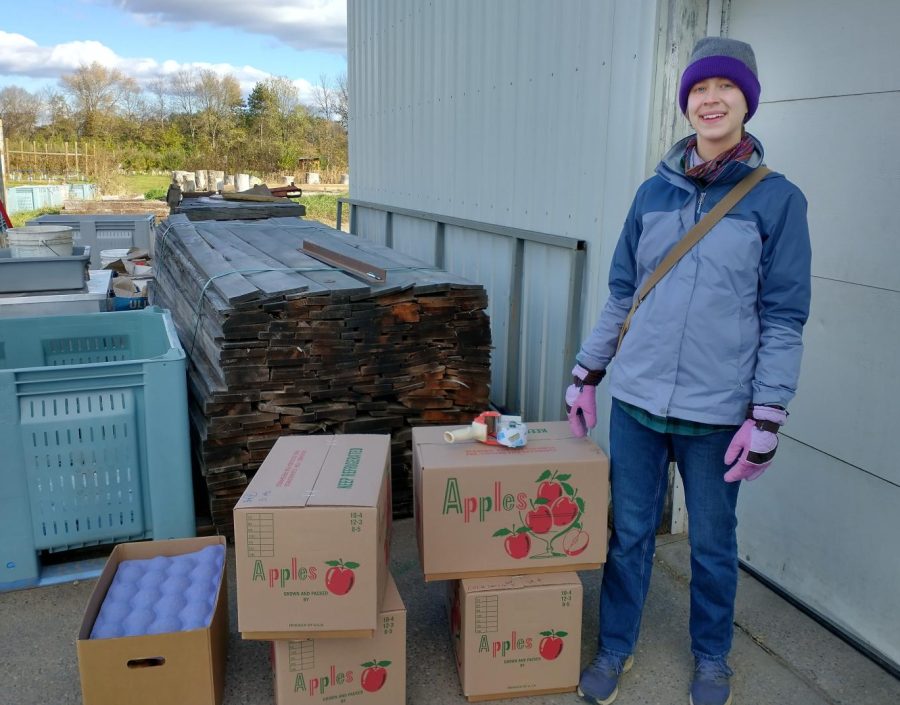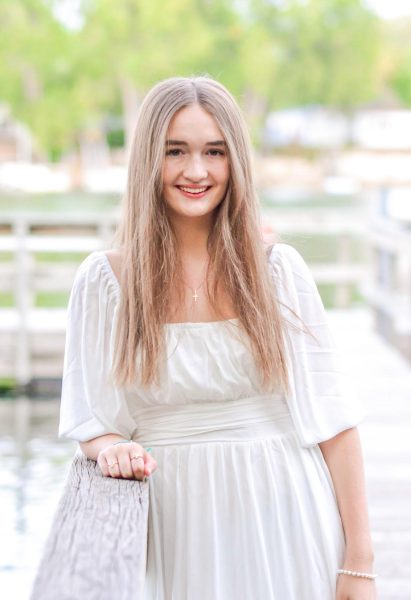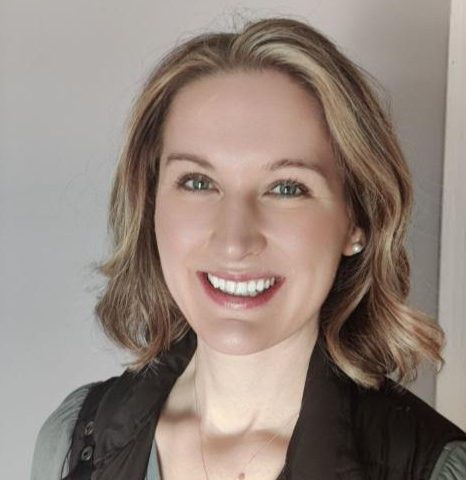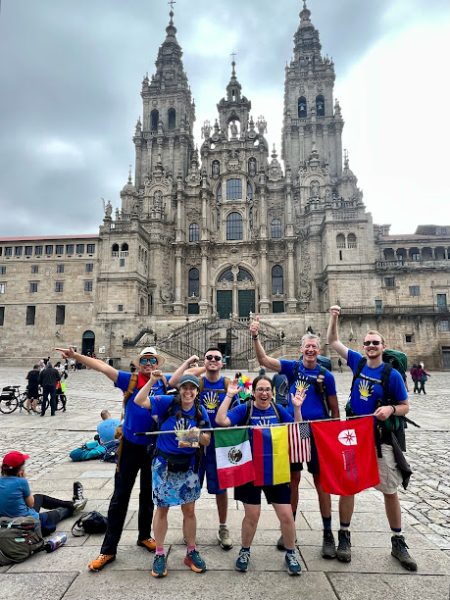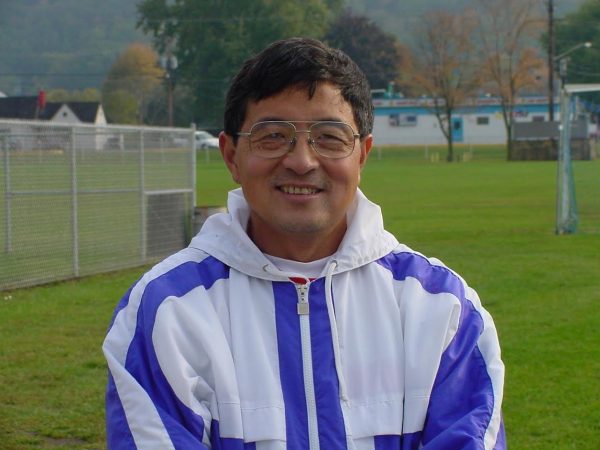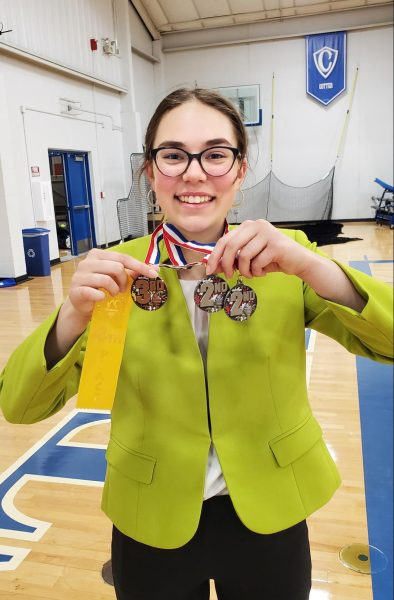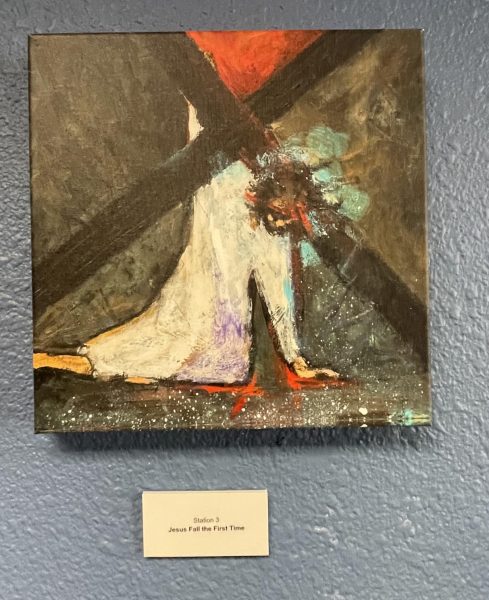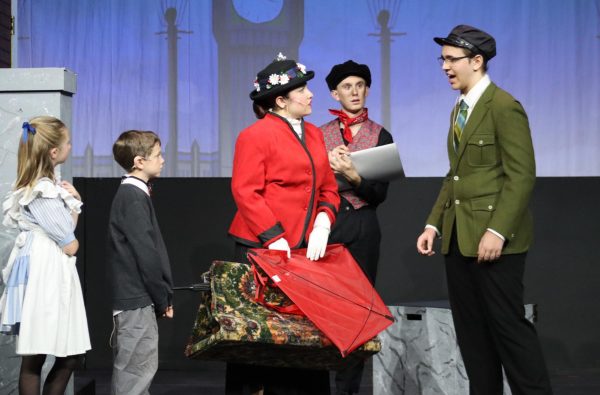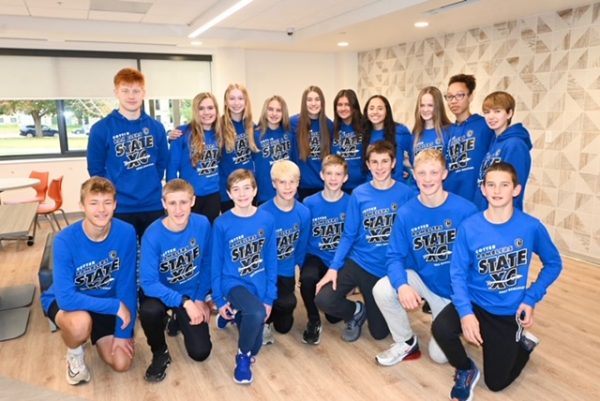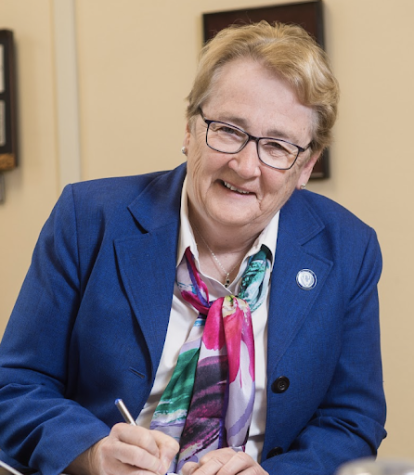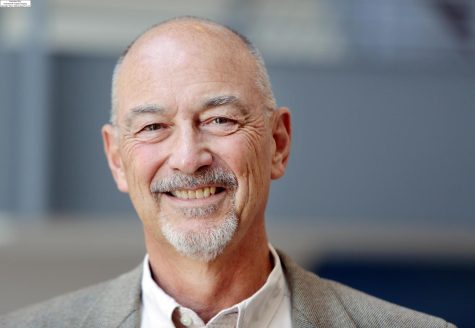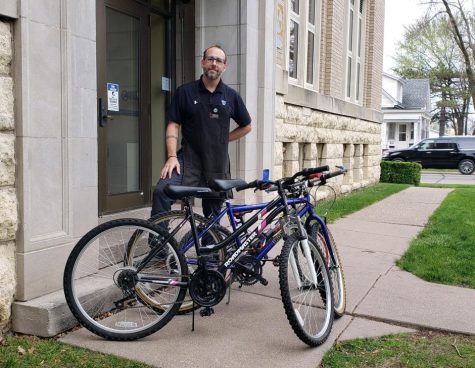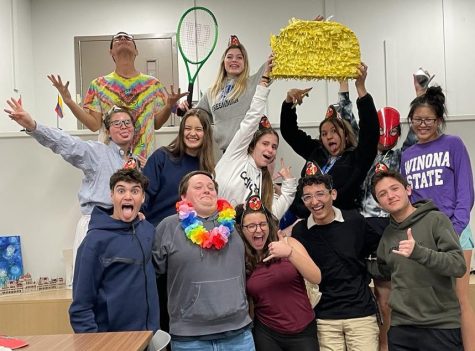Student’s apple research earns spot in international competition
Grace Finnerty at work at behind a storage shed at Ecker’s Apple Orchard in Centerville, Wisconsin
Grace Finnerty, a senior at Cotter, earned a spot in an international science fair competition. How about them apples?
The Regeneron Science Fair is an international competition for high school seniors who are interested in science. Nearly 2,000 students enter the competition each year and the Science Fair focuses on identifying, inspiring, and engaging the most promising scientists. Grace Finnerty entered the competition with a project she has been working on for several years and was very excited to advance to the international level of competition.
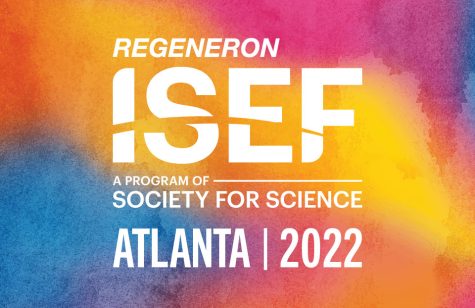
Finnerty advanced through the Regional Fair and the State Science Fair to qualify for the International Science Fair (ISF), which will be held in Atlanta in May, there will also be a virtual option due to the pandemic.
“I was very excited, but also kind of nervous, because it’s a higher level of competition, and I think that more is at stake,” Grace said.
Regeneron ISEF will be held as a hybrid event with a judged competition and distribution of Grand and Special awards.
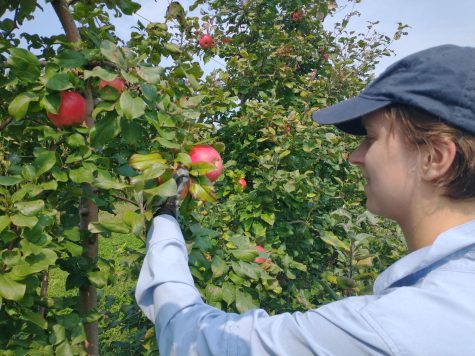
Grace has developed an original project, consisting of work with yields in apple orchards. She focused on a new technique of using hail netting, rather than a chemical spray, for a process called thinning. Working with Sarah Ecker of Ecker’s Apple Orchards in Centerville, Wisconsin, when Grace was in 10th grade led to her pursuing a project based on growing apples.
Grace learned about the practice of thinning trees to produce more consistent crops and larger apples and that the standard method has been using a chemical spray to cover whole trees. Her idea was to use a variation of hail netting to limit the growth of apples in a given year. This helps increase the size of individual apples and keep trees producing apples each year, rather than every other year.
When an unexpected frost hit the Ecker’s orchards where she planned to conduct the experiment, Sarah Ecker made an introduction between Grace and Tom Ferguson of Ferguson’s Orchards, a few miles down the road from Ecker’s, and he welcomed the project.
Interestingly, when Grace and Sarah Ecker talked about Grace’s idea they discovered that a group of scientists from Michigan State University were working on a similar idea and Grace was able to get in touch with them to share ideas and data.
“One thing I have been really impressed with is how much sharing and cooperation goes on in the apple industry, both locally, nationally, and internationally. Growers are always sharing information and ideas about new techniques for growing and managing their orchards,” Grace said.
Her experiment was conducted on Honeycrisp apples at Ferguson’s orchards. Grace monitored whole trees and individual branches that used the hail netting method for thinning and measured them against adjacent rows of Honeycrisp trees that used the traditional chemical spray.
In 10th grade, Finnerty completed a research project involving apples at an area orchard. That work sparked her interest in the field of apple growing, so she knew what topic to explore when pursuing another project during her senior year.
“I think that apple trees are unique, and fruit trees in general, because unlike a lot of other crops that farmers grow, these trees are around for years, so you really have to be mindful of the future and taking care of your plants now, because it affects future years,” she said.
Once procedures were set, the high school scientists implemented them. Around April and May of last year, Finnerty began setting up her experiment in the orchard. She then continued her research until late October.
According to a story in the Winona Post, Finnerty found that her hypothesis was supported: covering branches earlier resulted in fewer apples on those branches. When branches were covered while blossoms were about 52 percent open, the results were similar to chemical thinning. However, she also had an unexpected result. She gathered data about the apples’ weight and anticipated that with less fruit, the weight would be higher, but that was not the case. Now, she hypothesizes that perhaps covering individual branches instead of entire trees did not impact the amount of nutrients apples received.
Cotter science teacher Mrs. Tammy Drazkowski was the advisor for Grace and her project. She helped when Grace had questions about paperwork, or anything else.
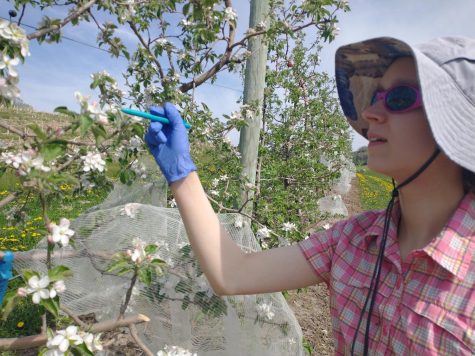
“Grace is a very hard and diligent worker. She plans well and carries through with her ideas. Grace was looking for a chemical-free way to prune apple trees,” Mrs. Drazkowski said. “I know that Grace has worked hard to get her project registered and submitted and to prepare for the virtual judging and questions. ”
With any science fair project students gain new knowledge about their topics as well as about science and how to go through the scientific process. It is rewarding to take an idea or passion and learn test a theory on it. As people go through and experiment and collect data and then communicate that data to others they become the experts and also gain experience in public speaking.
Grace plans to attend the University of Minnesota to study plant science studies and hopes to pursue a plan a career in agronomy.
